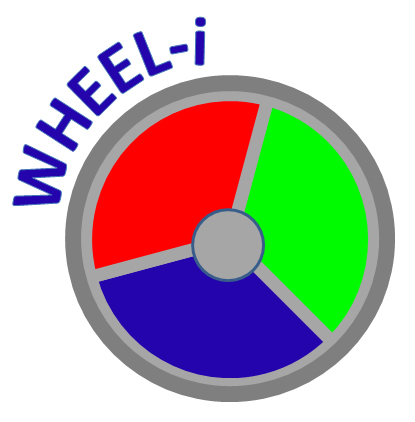
WHEEL-i
WHeelchair Expert Evaluation Laboratory
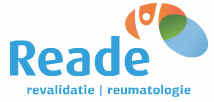
Lucas van der Woude, PhD (Project leader)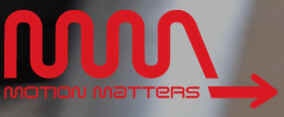
Sonja de Groot, PhD (Project coordinator)
Coen Vuijk, wheelchair
professional of Motion Matters![]()
Frank van Dijk, Master student Centre for Human Movement Sciences
Frank Ettema, physical therapist
Maurits Sloots, occupational therapist
Jenny van der Toorn, rehabilitation technician
Janneke Stolwijk, MD, PhD
Ferry Woldring, physical therapist
Sytske Teeninga, occupational therapist
Marga Tepper, MD, MSc
Introduction
The main purpose of rehabilitation is to optimize social participation and quality of life. Independent mobility is an essential prerequisite for participation. People who are wheelchair dependent (in the Netherlands estimated between 225.000-250.000 persons), are threatened in their societal possibilities and their personal welfare. Of them around 90% uses a hand rim wheelchair.
Currently, many Dutch rehabilitation centers have a laboratory where gait analyses are performed to diagnose deviations in the walking pattern, to evaluate an intervention and to be able to monitor changes in the walking pattern over time. With this analysis the patient's gait pattern can be assessed objectively. However, none of the rehabilitation centers analyzes wheelchair propulsion systematically while the academical expertise is available in the existing collaboration. Since wheelchair propulsion often leads to overuse injuries of the shoulder, elbow and wrist, it is important to evaluate and optimize the propulsion technique together with the wheelchair configuration and mechanics.
The weelchair-user interface and propulsion technique have been studied (inter)nationally for 20 years. From this research it is known that there are several factors that relate to overuse injuries of the upper extremity. The forces necessary to propel the wheelchair are not always high but the frequency of force transmission is high. An estimated minimal daily period of 1 hour wheelchair propulsion may lead to 1800 bimanual pushes. Therefore, it is important to diminish the push frequency as well as the force. This can be achieved, for example, by making long strokes. Besides the propulsion technique also wheelchair-technical aspects (e.g. mass, maintenance) and the interface between the wheelchair and the user (e.g. seat height, position of the wheel axle) are important for the experienced physiological and mechanical strain.
To evaluate the propulsion technique, wheelchair-user interface and wheelchair mechanics, (commercially available) measurement wheels (i.e. OptiPush or SmartWheel) can be used. These wheels can measure, among others, the forces and torques that are applied on the rim while the patient uses his own wheelchair.
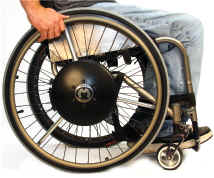 OptiPush
OptiPush
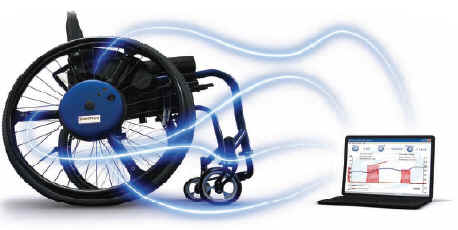 SmartWheel
SmartWheel
Factors such as force, push frequency, speed and stroke length can be analyzed easily with data of such a measurement wheel. These data can also be compared with reference data to be able to assess whether these values are acceptable. Based on these objective measures, wheelchair users can learn a good propulsion technique or the wheelchair configuration can be adjusted to improve mobility. A repeated measurement can show whether this new propulsion technique or wheelchair adjustment is effective. Such an analysis of the propulsion technique is important for every wheelchair user, i.e. for the patient who has the learn wheelchair propulsion from scratch but also for the elite wheelchair athlete who want his propulsion technique and wheelchair to be optimal to be able to win medals! The propulsion analysis with the measurement wheel can be complemented with video recordings of the movement (kinematics), measurement of the oxygen uptake to determine whether the new technique or configuration is more efficient (lower energy expenditure), or by measuring the muscle activity (EMG).
The purpose of this project is to implement a systematical analysis of the propulsion technique, the wheelchair-user interface as well as the wheelchair mechanics in the clinical settings of the rehabilitation centers Beatrixoord, UMCG and Reade (formerly known as RCA) analogous to gait analysis.
Watch the WHEEL-i instruction video here! (made by JeepMedia)
Download the WHEEL-i manual here (in Dutch)
Read all about wheelchair selection in the court sports in the practical guidelines developed by the Peter Harrison Centre for Disability Sport, Loughborough University, UK.
You can read more about this project in the Dutch newsletter of December 2010 or August 2011.

Publications
-
WHEEL-i: development of a wheelchair propulsion laboratory for rehabilitation. Groot S, Vegter R, Vuijk C, van Dijk F, Plaggenmarsch C, Sloots M, Stolwijk-Swüste JM, Woldring F, Tepper M, van der Woude LH. J Rehabil Med. 2014; 46(6): 493-503.
|
|
|
 |